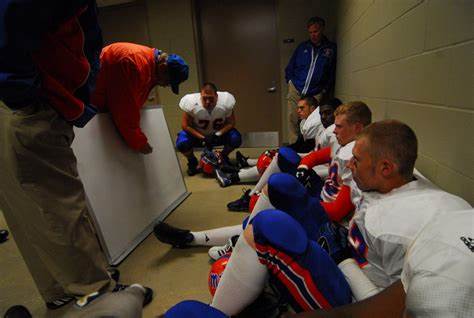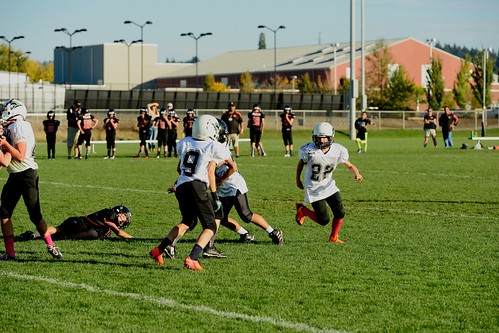American football, a symphony of strategy and athleticism, operates on a complex set of rules and intricacies. In this exploration, we dissect the inner workings of the sport, uncovering the layers that make it a captivating spectacle on and off the field.
The Playing Field
At the heart of American football is the playing field, a meticulously measured rectangle divided into yards. Hash marks and yard lines intricately pattern the turf, guiding the orchestration of plays. Goalposts, standing proudly at each end, mark the territory where triumph is celebrated.
The Teams and Positions
Two teams, each comprising offense and defense, engage in a strategic ballet. Positions range from the elusive quarterback directing the offense to the trench warfare of linemen battling in the line of scrimmage. Each player, a specialized cog, contributes to the symphony of movements and tactics.

The Game Clock and Quarters
Time, a precious commodity in American football, is measured in quarters. The game clock, ticking down from 15 minutes per quarter, governs the ebb and flow of the match. Halftime provides a strategic pause, allowing teams to regroup and adjust their strategies for the next act.
Scoring: Touchdowns, Field Goals, and Extra Points
The objective is clear: accumulate points through touchdowns, field goals, and extra points. Touchdowns, achieved by crossing the opponent’s goal line, are the apex of scoring. Field goals, executed by kickers with precision, add three points. Extra points follow touchdowns, challenging kickers to secure additional scores.
The Down System and Yards to Go
Central to American football’s strategy is the down system. Teams have four downs to advance the ball ten yards. Yards to go becomes the tactical chessboard, determining whether teams run, pass, or kick, each decision influenced by the distance needed for a new set of downs.
Penalties and Referee Signals
The game’s integrity relies on enforcing rules through penalties. Referees, clad in stripes, signal infractions with distinct gestures, turning the field into a semaphore of judgment. Penalties, ranging from encroachment to pass interference, add layers of drama and consequence.
Challenges and Instant Replay
In the pursuit of fairness, coaches can challenge certain calls through a limited number of challenges. Instant replay, a technological ally, allows officials to review contentious plays. This intricate dance between human judgment and technological precision shapes the course of the game.
The Draft and Team Building
Off the field, the operation of American football extends to team building through the NFL Draft. Teams select college prospects, shaping the future of franchises. The Draft, an annual spectacle, marks the convergence of strategy, scouting, and the pursuit of emerging talent.
Playbooks and Strategies
The soul of American football resides in playbooks and strategies. Coaches craft intricate plays, fusing creativity with deception. Offense and defense engage in a perpetual chess match, adapting to opponents’ moves while striving to dictate the tempo of the game.
Conclusion
American football operates as a captivating blend of strategy, physical prowess, and meticulous rules. From the choreography on the field to the intricacies of team building, the sport weaves a narrative that goes beyond touchdowns and tackles. As fans witness the orchestrated chaos of each game, they become part of an intricate tapestry that defines the unparalleled spectacle of American football.




